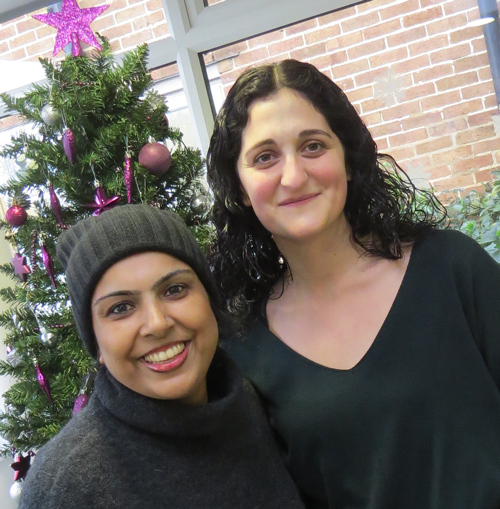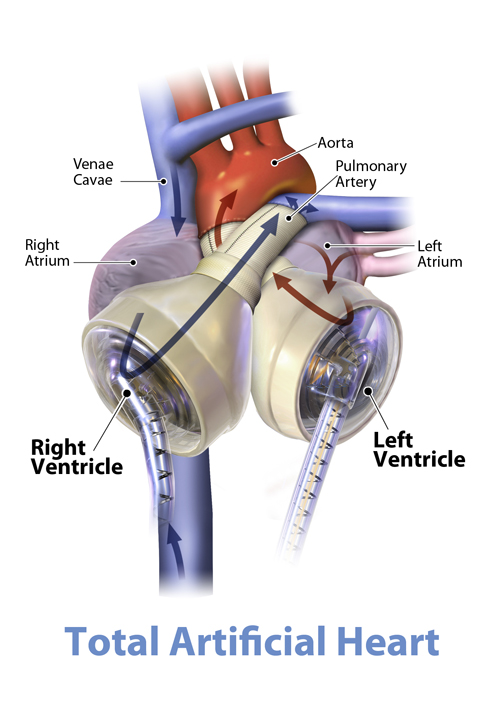 When Selwa Hussain was urgently referred to Harefield Hospital with end-stage heart failure in June 2017, the only option to save her life was to implant a total artificial heart. Only six months later, Selwa was able to temporarily leave the hospital and spend Christmas with her family.
When Selwa Hussain was urgently referred to Harefield Hospital with end-stage heart failure in June 2017, the only option to save her life was to implant a total artificial heart. Only six months later, Selwa was able to temporarily leave the hospital and spend Christmas with her family.
Selwa is mother to two young children and was just 39 years old when she had her heart removed from her body and replaced with a machine.
She had familial dilated cardiomyopathy, a genetic heart disease, but had no symptoms until 2016. Her condition deteriorated quickly and in June 2017 she was urgently referred to Harefield with end-stage heart failure.
Ms Diana Garcia Saez, specialty doctor in cardiothoracic transplantation at Harefield Hospital, said: "Despite us increasing her medication, Selwa's condition was getting worse very, very quickly.
"Often, a left ventricular assist device can be used to maintain circulation in patients with failing hearts, but this wasn't an option because it would not have supported the failing right-hand side of her heart. The only option to save her life was to implant a total artificial heart."
Selwa had her total artificial heart implanted on 27 June 2017. Harefield is the only centre in the UK that uses this device as a treatment for patients with heart failure.
Selwa said: "All I remember from before the operation was crying to my sisters, and giving my final wishes to my family. I remember when I woke up, being told my heart had been taken out, and I was so disorientated I thought 'what does this mean, have I died?'"
"I can't thank the staff at Harefield enough, they are all so positive for you, even when life felt very bleak. It is an incredible place."
Selwa spent the following month in hospital learning how to walk, talk, eat and drink again, and building up muscle strength through physiotherapy. She said: "I can't thank the staff at Harefield enough, they have been absolutely amazing; everyone, the doctors and the nurses, the physiotherapists are such experts, and the caterers, the cleaners, the healthcare assistants - they are all so positive for you, even when life felt very bleak. It is an incredible place."
The artificial heart is powered by a portable driver that weighs seven kilograms and must be carried with Selwa wherever she goes.
However, thanks to her personal commitment to recovery and the expertise of the Harefield team, Selwa was able to be discharged home in time to spend Christmas with her husband and children.
She added: "Over Christmas, I could go shopping, visit my family and I cooked for the first time in months. The device is an absolute godsend. To spend time with my family, to have some - even a little - normality back, is wonderful.
"Waking up at Christmas and seeing the kids playing at the bottom of my bed was a tearful moment... it makes you appreciate how precious life is."
 How do total artificial hearts work?
How do total artificial hearts work?
A total artificial heart (TAH) is a pump that is surgically implanted into the body. It replaces the heart ventricles, which pump blood out of the heart to the lungs and other parts of the body, if they are diseased or damaged.
A TAH has four mechanical valves that work like the heart's own valves. These valves connect the TAH to the heart's upper chambers and the major arteries. Once the TAH is connected, it duplicates the action of a normal heart, enabling blood to flow through the body.
The TAH is controlled by a machine which is outside of the body. A portable device can be used outside of hospital - this fits into a backpack and weighs about seven kilograms. It can be recharged at home.
